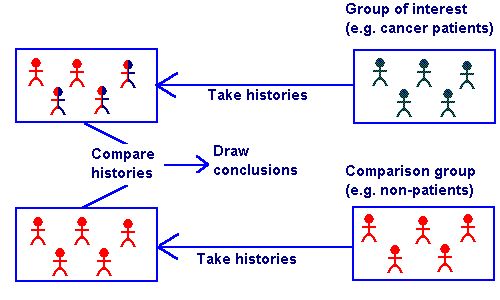In today’s rapidly evolving society, disparities in access to resources and opportunities continue to highlight deep-rooted issues within various systems. These inequities, often referred to as equity gaps, have become catalysts for significant transformations in public policy.
From education to healthcare and economic structures, the recognition of such gaps has prompted governments, organizations, and communities to rethink and redesign frameworks aimed at fostering fairness and inclusivity. This article delves into the nature of equity gaps, their far-reaching impacts, and how they have ignited a wave of policy reforms across multiple sectors. By examining real-world examples, challenges, and potential solutions, we aim to provide a comprehensive understanding of this critical topic.
Understanding Equity Gaps
Equity gaps represent the differences in outcomes experienced by various demographic groups due to systemic barriers. Unlike equality, which assumes everyone starts from the same point, equity acknowledges that individuals face unique challenges based on factors like race, socioeconomic status, gender, and geographic location. These gaps manifest in measurable ways, such as graduation rates, income levels, health outcomes, and access to services.
For instance, in the realm of education, equity gaps often appear in student achievement metrics. Students from marginalized communities may lag behind their peers in standardized test scores or college enrollment rates. This isn’t merely a matter of individual effort but stems from broader issues like underfunded schools in low-income areas or lack of culturally responsive teaching methods. Similarly, in healthcare, equity gaps can be seen in disparate mortality rates among racial groups for the same diseases, influenced by factors such as access to quality care and implicit biases in medical practices.
The origins of these gaps are multifaceted. Historical injustices, including redlining, discriminatory lending practices, and unequal resource allocation, have perpetuated cycles of disadvantage. Economic policies that favor certain groups over others exacerbate these issues, leading to widened divides. Environmental factors, such as living in areas with poor air quality or limited green spaces, also play a role, disproportionately affecting minority populations.
Recognizing these gaps is the first step toward addressing them. Data collection and analysis have become essential tools in this process. Governments and institutions now use sophisticated metrics to track disparities, allowing for targeted interventions. However, the challenge lies in moving beyond identification to actionable change, which is where policy reforms come into play.
The Role of Equity Gaps in Sparking Reforms
When equity gaps become too pronounced, they often spark public outcry, research initiatives, and ultimately, policy overhauls. Public awareness, amplified by media and advocacy groups, pressures decision-makers to act. For example, social movements like Black Lives Matter have highlighted racial inequities in policing and justice systems, leading to reforms in body camera usage and community policing strategies.
In education, equity gaps have been particularly influential in driving funding reforms. Studies show that efforts to equalize school funding have sometimes inadvertently worsened racial disparities in certain contexts. In states where initial inequities were modest, reforms helped narrow gaps, but in areas with severe disparities, the changes fell short or even amplified issues due to implementation flaws. This has led to calls for more nuanced approaches, such as weighted funding formulas that allocate more resources to high-need districts.
Higher education also faces significant equity challenges. Disparities in access and completion rates for underrepresented students have prompted institutions to adopt holistic admissions processes and support programs like mentoring and financial aid tailored to diverse needs. Community colleges, in particular, are focusing on closing these gaps by identifying best practices and collaborating with organizations to implement evidence-based strategies.
Beyond education, equity gaps in workforce participation have influenced labor policies. Women and minorities often face wage gaps and barriers to advancement, prompting reforms like pay transparency laws and diversity hiring mandates. In healthcare, the COVID-19 pandemic exposed stark disparities in vaccine access and health outcomes, leading to policies aimed at improving community health centers and telehealth services in underserved areas.
Economic policies are another area where gaps drive change. Tax reforms, minimum wage increases, and social safety nets are often redesigned to address income inequality. For instance, progressive taxation systems aim to redistribute wealth more equitably, reducing the burden on low-income families.
Case Studies of Policy Reforms Triggered by Equity Gaps
To illustrate the impact, let’s examine specific case studies where equity gaps have directly influenced policy shifts.
A. Education Funding Overhauls in the United States
In recent years, several states have revised their school finance systems to combat racial and socioeconomic inequities. However, research indicates mixed results. For example, in California, the Local Control Funding Formula shifted resources to districts with high concentrations of English learners, foster youth, and low-income students. This reform aimed to close achievement gaps by providing supplemental grants. Initial data showed improvements in graduation rates for targeted groups, but challenges like bureaucratic hurdles persisted.
B. Healthcare Equity Initiatives Post-Pandemic
The global health crisis amplified equity gaps, with minority communities experiencing higher infection and death rates. In response, countries like the UK introduced targeted vaccination campaigns and invested in health equity research. In the US, the Biden administration’s policies included expanding Medicaid and funding community-based organizations to address social determinants of health.
C. Workforce Diversity Policies in Tech Industries
Silicon Valley’s lack of diversity sparked reforms in hiring practices. Companies like Google and Microsoft implemented unconscious bias training and set diversity goals. Government policies, such as the EEOC’s enforcement of anti-discrimination laws, further encouraged these changes, leading to increased representation of women and minorities in STEM fields.
D. Environmental Justice Reforms
Equity gaps in environmental health have led to policies addressing pollution in disadvantaged neighborhoods. The US EPA’s Justice40 initiative directs 40% of federal investments in climate and clean energy to underserved communities, aiming to reduce disparities in air quality and access to green spaces.
E. Housing Policy Changes
Redlining’s legacy created vast equity gaps in homeownership. Reforms like the Fair Housing Act amendments and affordable housing incentives seek to rectify this by promoting inclusive zoning and anti-discrimination measures.
These cases demonstrate that while reforms are promising, their success depends on robust implementation and ongoing evaluation.
Challenges in Implementing Policy Reforms
Despite the momentum, addressing equity gaps through policy is fraught with obstacles. Political resistance often hinders progress, with debates over funding sources and ideological differences stalling initiatives. For instance, conservative viewpoints may argue that such reforms promote “reverse discrimination,” while progressives push for more aggressive measures.
Data limitations pose another challenge. Accurate measurement of equity gaps requires comprehensive, disaggregated data, which isn’t always available due to privacy concerns or inadequate tracking systems. Moreover, unintended consequences can arise, as seen in some school funding reforms that widened gaps in highly unequal states.
Cultural shifts are also necessary. Policies alone can’t eradicate deep-seated biases; they must be accompanied by education and community engagement. Resource allocation remains a hurdle, as underfunded agencies struggle to enforce new rules effectively.
Finally, global events like economic downturns or pandemics can exacerbate gaps, requiring adaptive policies that respond in real-time.
Benefits of Closing Equity Gaps Through Reforms
The advantages of successful policy reforms are profound. Economically, reducing disparities boosts overall productivity by tapping into untapped talent pools. Societies with narrower equity gaps experience lower crime rates, better health outcomes, and stronger social cohesion.
In education, closing gaps leads to a more skilled workforce, driving innovation and growth. Health reforms save lives and reduce healthcare costs by preventing chronic conditions through equitable access. Environmentally, fair policies promote sustainability and resilience against climate change.
On a societal level, these reforms foster trust in institutions, reducing alienation and promoting civic participation. Ultimately, they contribute to a more just and prosperous world.
Future Outlook and Recommendations
Looking ahead, technology will play a pivotal role in addressing equity gaps. AI-driven analytics can predict and prevent disparities, while digital platforms expand access to education and services. However, ethical considerations must guide these tools to avoid perpetuating biases.
Recommendations for policymakers include:
A. Prioritizing Data-Driven Approaches
Invest in robust data systems to monitor gaps continuously and adjust policies accordingly.
B. Fostering Cross-Sector Collaboration
Encourage partnerships between government, NGOs, and private sectors for holistic solutions.
C. Incorporating Community Voices
Ensure reforms reflect the needs of affected groups through inclusive decision-making processes.
D. Allocating Sustainable Funding
Secure long-term resources to support implementation and evaluation.
E. Promoting Education and Awareness
Integrate equity training into professional development across fields.
F. Evaluating and Iterating
Regularly assess reform impacts and refine strategies based on evidence.
G. Addressing Intersectionality
Recognize how multiple identities (e.g., race and gender) compound gaps and tailor policies accordingly.
H. Global Learning Exchanges
Share best practices internationally to accelerate progress.
By adopting these strategies, we can build on the momentum sparked by equity gaps to create lasting change.
Conclusion
Equity gaps, though challenging, serve as powerful motivators for policy reforms that pave the way for a fairer society. From education to healthcare and beyond, the drive to close these divides has led to innovative solutions and measurable improvements. As we continue to confront these issues, commitment to equity will define our collective future. By expanding our understanding and actions, we can ensure that opportunities are accessible to all, regardless of background.













